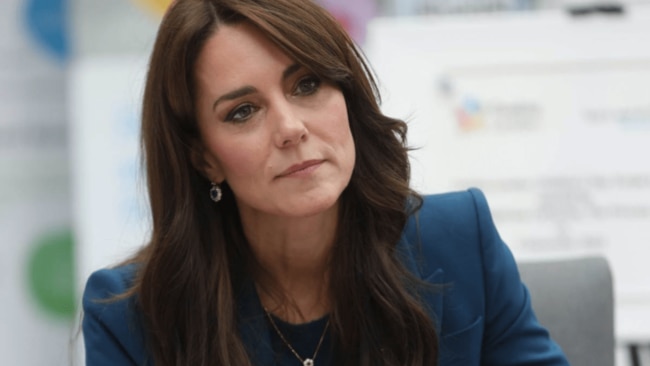What exactly is preventative chemotherapy?
Behind the Princess' cancer treatment

Lifestyle
Don't miss out on the headlines from Lifestyle. Followed categories will be added to My News.
The Princess of Wales has revealed she is currently undergoing a round of preventative chemotherapy following a cancer diagnosis related to her January abdominal surgery. Here’s what you need to know about the treatment.
Aussie awoke this morning to a shocking update on the Princess of Wales’ health, directly from Catherine herself.
In a two-minute video posted to the Royal couple’s official Instagram, the Princess explained that following her successful major abdominal surgery in January, doctors found traces of cancer, prompting the Princess to undergo a round of preventative chemotherapy.
While the video has been made to silence conspiracy theories and lay the public’s concern about the Princess’ extended absence, her shock announcement is likely to raise a few questions.
So, while the Princess and her family are now hopefully able to focus on her recovery in peace, shielded from public scrutiny, here’s everything you need to know about the preventative treatment she is currently undergoing.
What is preventative chemotherapy?
While medical advancements continue to improve, it can still be extremely difficult to foresee the exact behaviour of many types of cancer, such as how they grow, spread, and respond to treatments.
In Kate’s case, the shocking discovery of cancerous cells in her abdominal region is likely why her medical team are treating her diagnosis as especially unpredictable.
Preventative chemotherapy, while not a medical term, generally refers to using the same chemotherapy drugs people use to treat advanced or active cancers.
The drugs are designed to eradicate any traces of cancer cells in the body – detectable or not – including cells that may have spread beyond the initial cancer site.
Preventative chemotherapy is usually prescribed depending on a patient’s clinical history, or if pathology results indicate a cancer is likely to spread, “It is something to give additional assurance that the cancer won't come back or metastasise in the future," Dr Katherine Van Loon, professor of medicine and a gastrointestinal oncologist at the University of California, San Francisco, tells Time Magazine.

How is preventative chemotherapy different to regular chemotherapy?
While “preventative chemotherapy” isn’t a used medical term per se, adjuvant chemotherapy is, and refers to administering the same chemotherapy drugs to kill any remaining and microscopic cancer cells, Dr Van Loon.
While she isn’t a doctor working on Kate Middleton’s case, she says that this form of treatment is used to destroy cells the surgery cannot see, or may be present in other parts of the body.
In the Princess’ case, her abdominal surgery in January was likely used to remove visible cancer cells, and the adjuvant chemotherapy is to eradicate the remaining cells that are harder to detect or keep persistent cancer under control.
Regular chemotherapy, on the other hand, is used when cancer is initially detected, as a way to shrink the tumours to an operable size or eradicate it entirely.
In adjuvant treatment, the same cancer-treating agents can be used as in regular chemotherapy. Sometimes this is at a small amount, but it is often administered in the same dosage
“There is a lot of evidence to support adjuvant chemotherapy impacting overall survival, and allowing patients to live years longer and perhaps even effecting a cure,” Dr Beth Karlan, director of women’s health research at UCLA’s Jonsson Comprehensive Cancer Center, tells Time. The hope is that “it is preventing recurrence and thereby allowing her to live a full and productive life. The example she is providing with her message will have a salutary effect on so many other people.”
How is preventative or adjuvant chemotherapy administered?
Just like regular chemotherapy, adjuvant chemotherapy is administered via an infusion, usually in a hospital or cancer treatment facility. Sometimes, it can be administered at home.
How long is a course of preventative chemotherapy?
While regular chemotherapy courses tend to range from three to six months (but can be shorter or longer), adjuvant chemotherapy tends to be shorter.
Since “preventative chemo” is used to destroy remaining cancer cells that are hard to see/operate on, or have spread throughout the body, they are more easily treated by chemotherapy - thus the courses can be shorter.
This treatment can be as short as a few weeks, per the Mayo Clinic.
However, if adjuvant chemotherapy is being used to stop cancer cells returning, the Mayo Clinic also says that it can be administered on a very long-term basis, to keep the patient cancer-free. For that form of treatment, adjuvant chemotherapy courses can extend for up to 10 years.
This will also depend on the form of cancer.
More Coverage
Originally published as What exactly is preventative chemotherapy?




